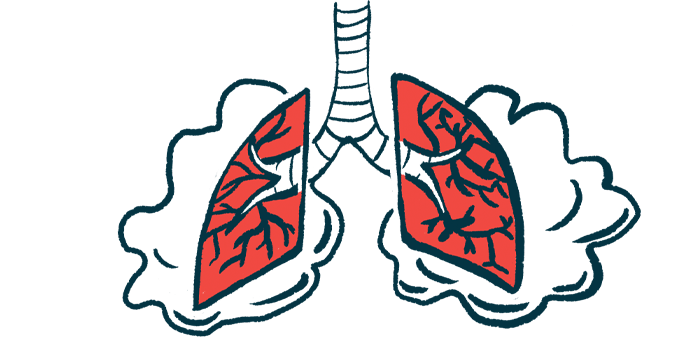Oxygen Therapy Is Only Effective Treatment for COPD With PH: Study

Supplemental long-term oxygen therapy is the only effective treatment for people with pulmonary hypertension (PH) associated with chronic obstructive pulmonary disease (COPD) who have low blood oxygen, according to a systematic review of studies.
Such long-term oxygen treatment “may mildly reduce severity of PH, slow PH progression over time, and reduce mortality, but without any other clinical or functional benefit,” the researchers wrote.
The scientists — whose review evaluated therapies for PH patients with COPD, an inflammatory condition of the lungs — found that medications approved to treat pulmonary arterial hypertension (PAH) generally did not work in these patients.
The review study, “Treatment of pulmonary hypertension associated with COPD: a systematic review,” was published in the journal ERJ Open Research.
COPD, by its very name a chronic disease, is characterized by shortness of breath, cough with mucus, recurrent hospitalizations, and shortened survival.
The presence of PH — high blood pressure in the blood vessels that supply the lungs or the pulmonary arteries — in people with COPD is an important factor contributing to worse clinical outcomes.
Studies suggest severe PH and resulting heart failure are related to more severe shortness of breath and limited exercise abilities. An enlarged pulmonary artery is independently associated with a higher risk of COPD exacerbations, a sudden worsening of symptoms, and related hospitalizations.
Notably, PH has a stronger association with mortality in COPD than standard lung function measurements — meaning that patients with both conditions have an increased risk of death.
Given these findings, researchers based at the University of Western Ontario, in Canada, along with collaborators, searched for studies that reported on treatment options that may help people with COPD-associated PH (COPD-PH). The selected studies, published between 1947 and 2020, included at least 10 participants who were followed for at least four weeks of treatment.
The team identified 46 studies that matched their criteria, of which half were randomized, controlled trials that followed a total of 1,159 participants. The other half were nonrandomized controlled trials covering 1,187 participants. Overall, patients ranged in age from 35 to 85, and most were men (32–100%).
Eight studies investigated long-term oxygen therapy (LTOT), with most following patients for at least a year. Of these, five showed modest reductions in mean pulmonary artery pressure and/or pulmonary vascular resistance — a measure of the internal resistance to blood flow within the pulmonary arteries.
Three studies reported no change in cardiac output, or the amount of blood the heart pumps per minute, and two found LTOT was associated with less PH progression over time. No studies examined clinical or functional outcomes other than mortality benefits. But three out of four studies reported improved survival with LTOT.
Among COPD-PH patients with low blood oxygen (hypoxemia), “supplemental long-term oxygen therapy (LTOT) mildly reduced mean pulmonary artery pressure (PAP), slowed progression of PH, and reduced mortality, but other clinical or functional benefits were not assessed,” the researchers wrote.
Four studies examined the effects of calcium channel blockers, a medication that lowers blood pressure by widening blood vessels, over at least two months of treatment. Although these medicines may provide mild benefits to blood flow parameters (hemodynamics), there was no evidence indicating they had any clinical or survival benefits. Further, results showed these medications were poorly tolerated.
Six studies assessed the effects of oral phosphodiesterase type 5 inhibitors (PDE-5i) approved for PAH, including Revatio (sildenafil) and Adcirca (tadalafil). Treatment with these medications significantly improved hemodynamics in these patients, but these effects did not translate to clinical or functional factors or quality of life benefits.
Two placebo-controlled studies had investigated the effects of Tracleer (bosentan) — approved in the U.S., the EU, and several countries for PAH — in severe COPD. One study showed mild benefits in hemodynamics with improved exercise capacity. Still, the other showed inconsistent hemodynamic and clinical benefits, such as improvements in the distance walked in six minutes or quality of life. Overall, these medications had limited and uncertain benefits in these patients, the researchers found.
Four studies evaluated the impact of multiple therapies that treat PAH in patients with COPD-associated PH, but none improved survival and any potential clinical and/or functional benefits were short-lived. Participants with objective responses to treatments, such as improvements in the New York Heart Association (NYHA) functional class or pulmonary vascular resistance, may have improved survival.
Lastly, the researchers reviewed four randomized controlled trials that assessed cholesterol-lowering statins, commonly used in COPD due to co-existing cardiovascular disease. Three of the trials showed a significantly decreased pulmonary artery pressure, whereas one showed no change. Additionally, changes in shortness of breath, functional abilities, or quality of life were inconsistent.
“This review supports recent guidelines which recommend LTOT in hypoxaemic COPD-PH patients but do not recommend other treatments for COPD-PH, including PAH-targeted medications,” the scientists concluded. “Development of future therapies depends upon new ideas on the pathobiology of COPD-PH.”









